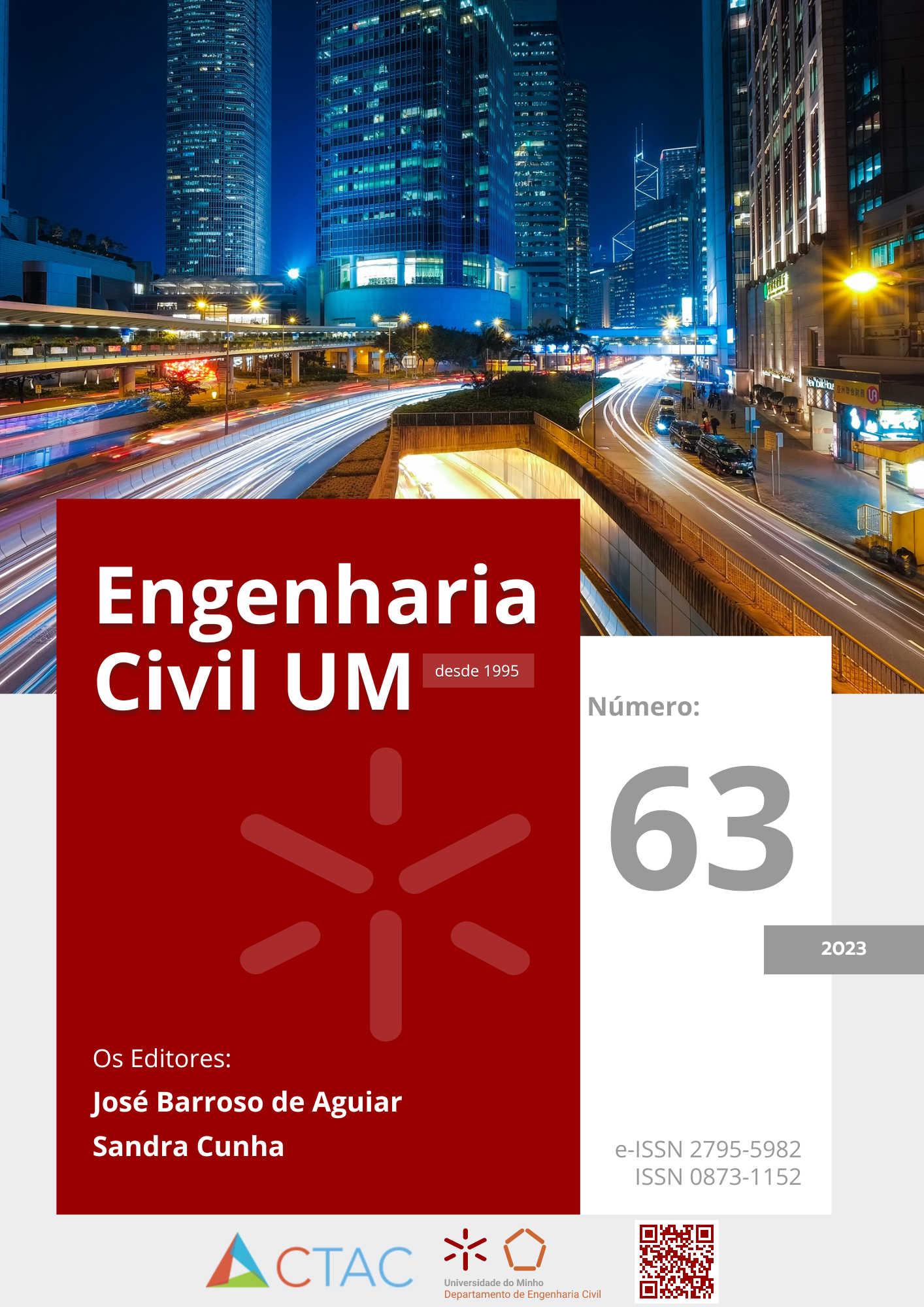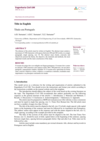Impact of Change in Urban Road Geometry and Semaphoric Times in a Pollutant Emission Simulation
DOI:
https://doi.org/10.21814/ecum.4638Keywords:
Mobilidade Urbana; Poluição Atmosférica; Densidade; Microssimulador de TráfegoAbstract
The maintenance of urban mobility is an important way to ensure the development of urban centers, as they are constantly changing. The singularity of each case, makes planning complex, due to the impacts that the proposed changes can cause. This way, studies about this matter and the various parameters that involve it are fundamental, with the intention of quantifying these impacts and making the least invasive decisions for society. Between these parameters, density stands out, which is closely linked to pollutant emissions and traffic speed. In that sense, the Brasil Avenue in the city of Passo Fundo, Brazil, is defined as the main access to downtown-suburb as well as to the exit of the municipality, presenting exhaustion in its traffic capacity, that leads to traffic jams, blocked intersections, and a higher pollutant emission; all due to under dimensioned roadway system to the current traffic. In this context, the objective of this research is to analyse the impacts that changes in road geometry and semaphoric times of Brasil Avenue will cause in the indicatives of urban mobility, and consequently, in the traffic efficiency of the road, from the Aimsun® traffic microssimulator, observing the density and emission data of pollutants.
References
H. D. B. Noronha, Estudo comparativo de dois simuladores de tráfego: AIMSUN e VISSIM, Trabalho de Conclusão de Curso, Universidade Federal de Santa Catarina, Florianópolis, Brasil, 2016.
Instituto Brasileiro de Geografia e Estatística (IBGE), https://cidades.ibge.gov.br/brasil/rs/passo-fundo/panorama, 2020 (acesso em 6 março 2020).
Estatuto das Cidades, Lei nº 10.257, (2001).
Prefeitura Municipal de Passo Fundo (PMPF), Secretaria de Planejamento, Plano Diretor de Mobilidade Urbana de Passo Fundo – 2014, http://www.pmpf.rs.gov.br/interna.php?t=6&p=770, 2020 (acesso em 21 fevereiro 2020).
Código de Trânsito Brasileiro (CTB) – Lei nº 9.503, de 23 de setembro de 1997. http://www.planalto.gov.br/ccivil_03/leis/l9503.htm, 2020 (acesso em 21 fevereiro 2020).
S. Joner, N. M. P. Volpi, Sincronização de semáforos: modelo matemático para uma aplicação ao tráfego de Curitiba, Holos, 2 (2015) 3–18.
M. R. M. Araújo, J. M. Oliveira, N. Sá, P. Santos, T. Lima, Transporte Público Coletivo: discutindo acessibilidade, mobilidade e qualidade de vida, Revista Psicologia e Sociedade. 23 (3) (2011) 574-582.
H. Pietrantonio, Controle de Tráfego em Fluxo Descontínuo, Escola Politécnica da Universidade de São Paulo, 2010.
B. S. Bezerra, Semáforos: gestão técnica, percepção do desempenho e duração dos tempos, Tese (Doutorado), Escola de Engenharia de São Carlos, São Carlos, SP, Brasil, 2007.
R. Brinco, Políticas de estacionamento e efeitos na mobilidade urbana, Indicadores Econômicos FEE – Porto Alegre, 44 (2) (2016) 109-124.
Departamento Nacional de Infraestrutura de Transportes (DNIT), Manual de Estudos de Tráfego, Rio de Janeiro (2006).
Highway Capacity Manual (HCM), Transportation Research Board (TRB), 2010.
Downloads
Published
How to Cite
Issue
Section
License
Copyright (c) 2023 R. S. Ribeiro, P. C. Pinto

This work is licensed under a Creative Commons Attribution 4.0 International License.








